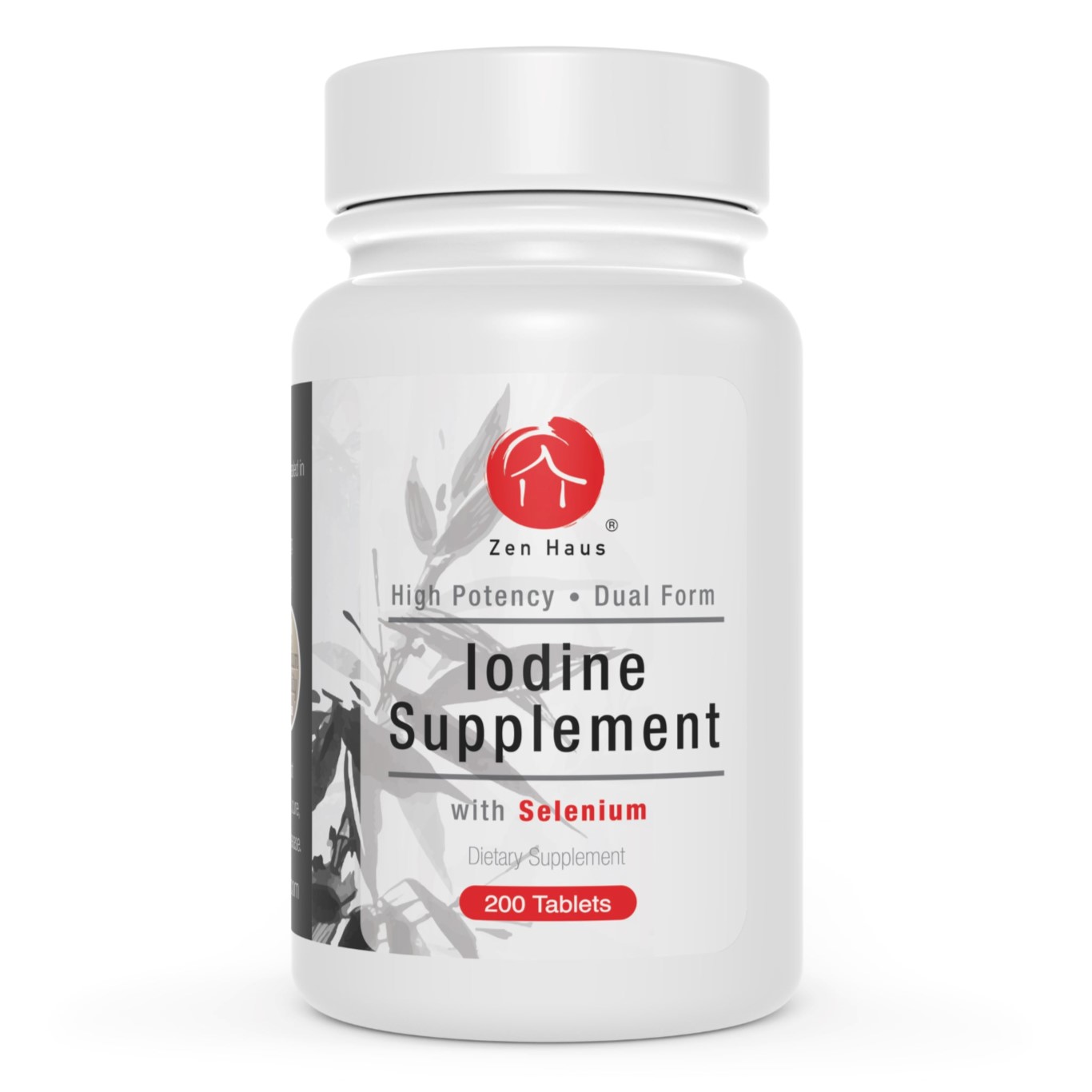Why KI?
Part I – Introduction
The word on iodine is starting to get out. The growing number of individuals taking at least 12.5 mg of iodine on a daily basis shows some departure from the old paradigm of allowing the medical industry and large pharmaceutical companies ultimately determine what is best for your health. After all, 12.5 mg is more than 80 times the recommended daily amount in the US. We are generally aware of the many benefits of eating uncontaminated seaweed which is high in iodine content. However many medical professionals still maintain that iodine is poisonous but not so for potassium iodide. As we will see, the matter is not so simple.
We are excited to know that more and more people are waking up and realizing they must take responsibility for their own well being. To do so we need to start thinking critically about our health related choices. Regardless of what position you take, we can all use articles and discussions like this to nourish the minds of our fledgling iodine community, promote informative discussions, ask better questions and further our understanding of iodine supplementation. We encourage you to join groups that are open to hearing different perspectives and experiences. We will all be better off from the free exchange of information.
We will make the case for KI, or potassium iodide, being the superior form for supplementation. Most of the arguments and evidence will be presented but not all. A more detailed writing will be posted later. This article rests on five principles for analyzing data and evidence. These principles are:
- clinical evidence is better than anecdotal evidence
- studies performed on humans are better than those performed on rats
- long term studies are better than short term studies
- larger data pools are better than smaller ones
- raising a question does not constitute an argument
On one level, this post is about showing the numerous benefits of KI throughout the body. On another, it is a friendly challenge and an opportunity for iodine users to think critically about a key aspect of iodine supplementation that is often swept under the rug. That is, which form(s) of iodine does the body need? It is an appeal to reason and at the very least an appeal for you to think about important questions that are relevant to your health. Lynne Farrow, in her book The Iodine Crisis, said “the biggest problem the iodine-taking community faces is the common belief that there is nothing to know about iodine.” We agree with this statement and would like to see more folks asking questions and actively promoting discussions. Having a better understanding of the issues will provide you with the opportunity to make informed decisions. This is the first step towards taking responsibility for your well-being.
The Zen Haus philosophy is all about simplicity and effectiveness. Each Zen Haus Iodine Supplement pill contains 12.5 mg of free iodine by way of 3 mg molecular iodine and 12.7 mg of potassium iodide. For more details about the alternative formula read the Iodine and Iodides in Seaweeds and Supplements post. We maintain that potassium iodide is the superior form for regular iodine supplementation for most people. Some believe that the Lugol’s form is generally better. Others may argue there is still not enough research to make a clear determination. However, working with what is available, we are able to make a strong case for KI. We want to be clear that Lugol’s form is also effective. Though not superior. Why would it not be effective when it is mostly potassium iodide? 60% to be exact.
This article will show:
- the wide range of functions potassium iodide has in the body (Part I)
- origins of Lugol’s form (Part I)
- explore arguments presented for supplementing with Lugol’s form for breast tissue (Part II)
- explore arguments presented for supplementing with Lugol’s form for the stomach and prostate (Part III)
- explain how Lugol’s could be as effective as potassium iodide and why both are the right answer (Part IV)
- identify and discuss some responses to potassium iodide (Part IV)
Iodine is found on earth mainly as the highly water-soluble iodide ion (I-). It is mostly found in the ocean. The term ‘iodine’ can refer to both molecular iodine and iodide. Potassium iodide (KI) is generally accepted as the preferred form of iodine for supplementation. In order to avoid confusion and to simplify the reading, the following short forms will be used.
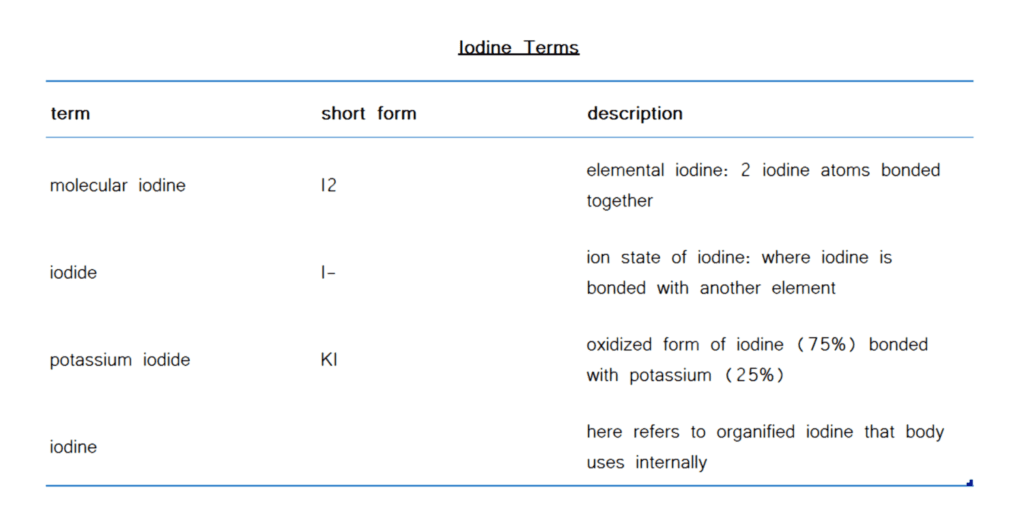
Common Ground: Where Iodide is Universally Accepted As The Preferred Form
First let us briefly look at which parts of the body use iodide (I-). At least the ones we can all agree on. The most important being the thyroid gland. The thyroid concentrates the most amount of iodine in the body and specifically requires the iodide form. You can read more about this in our first article on Iodine as Medicine which gives an overview of iodine supplementation. It is also discussed in more detail in the Iodine and Weight Loss article. After the thyroid gland, the ovaries hold the highest concentration of iodine.1 The ovaries also require the iodide form. Cells that concentrate iodide also include: white blood cells2, salivary glands, eye glands and muscles, kidney cells, the pancreas, lungs3, liver, nasal passage, cerebral brain fluid, blood vessels in the brain, skin, adrenals, testicles4,5, thymus gland6, ovaries, placenta and uterus.7,8 Iodide seems to be welcomed in just about every part of the body. After the thyroid, the ovaries have the second highest concentration of iodine in the body and it also prefers the iodide form. Please note that we have left out any parts of the body which others have argued requires specific need or preference molecular iodine (I2). For the sake of clarity we will deal with those areas separately. Here are the iodide utilizing parts of the body.
Parts of The Body Using Iodine
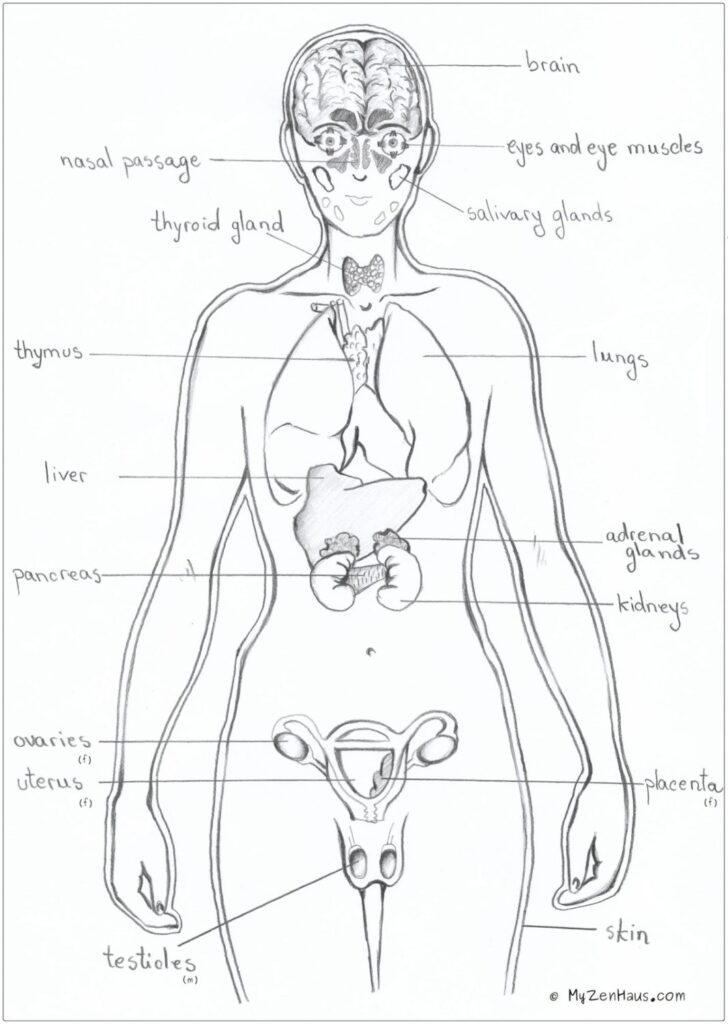
We can see that iodide is used across many systems, glands and tissues in the body.
It is no surprise then that the famous words of Albert Szent Gyorgyi still rings true. “When I was a medical student, iodine in the form of KI was the universal medicine. Nobody knew what it did, but it did something and did something good. We students used to sum up the situation in this little rhyme:9
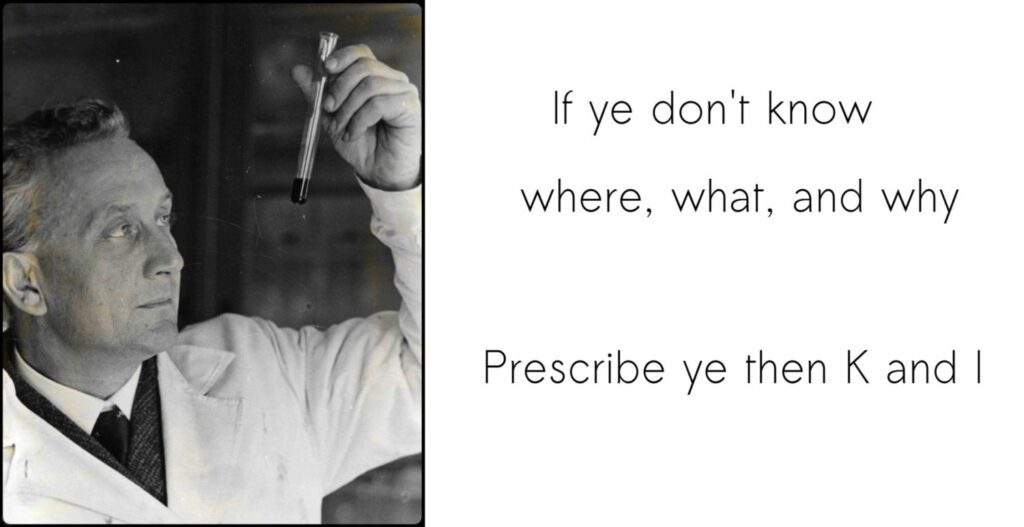
You may have also heard about researchers and medical professionals getting hold of old medical texts. They were surprised at how often iodine, and specifically potassium iodide, was prescribed for treatment for a wide range of diseases. It is mentioned that iodides penetrate into every tissue and also convert metals into soluble forms that can be removed by the body. The rapid diffusion of iodides in and out of the blood is also discussed. Some British doctors used to recommend hydrogen iodide. Both potassium iodide and hydrogen iodide are the iodide form of iodine.
Some have argued that three parts of the body either require or prefer molecular iodine (I2). This seems a bit exceptional given the many parts of the body that require iodide. At least it is safe to say that iodide is not a useless form for iodine supplementation. More on this later. Let us now consider the history of Lugol’s form and take a close look at the arguments made for its requirement by these other three body parts.
Lugol’s Iodine
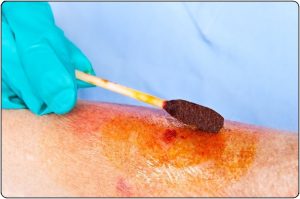 Lugol’s iodine is a solution of potassium iodide and molecular iodine. It was created and used as an antiseptic and disinfectant in the early 1800s (see Lugol’s Not Created for Supplementation). Molecular iodine solutions were already commonly used as a disinfectant and antiseptic agent. Adding potassium iodide allowed for higher amounts of iodine in a stable solution. This made it more concentrated and a powerful disinfectant. The solution can be added to river water in emergencies to make it drinkable. Though it is not recommended to do this regularly. It has also been suggested to be superior to chlorine as a cleaning agent for swimming pools.
Lugol’s iodine is a solution of potassium iodide and molecular iodine. It was created and used as an antiseptic and disinfectant in the early 1800s (see Lugol’s Not Created for Supplementation). Molecular iodine solutions were already commonly used as a disinfectant and antiseptic agent. Adding potassium iodide allowed for higher amounts of iodine in a stable solution. This made it more concentrated and a powerful disinfectant. The solution can be added to river water in emergencies to make it drinkable. Though it is not recommended to do this regularly. It has also been suggested to be superior to chlorine as a cleaning agent for swimming pools.
Arguments Used for Supplementing with Lugol’s Iodine
Lugol’s iodine includes both the molecular iodine (I2) and potassium iodide (KI) forms of iodine. The general argument for supplementing with Lugol’s iodine is that some organs and tissues in the body prefer one form over the other. Proponents of this argument will pose that breast (or mammary gland) tissue, stomach tissue and the prostate gland prefer molecular iodine over iodides. Some will go further and say molecular iodine is the only acceptable form for these tissues.
In Part II we will begin to look at these three areas, starting with the breasts.
.

